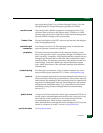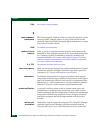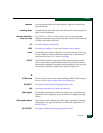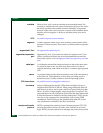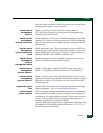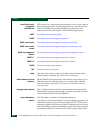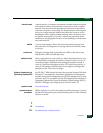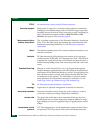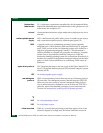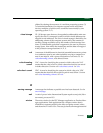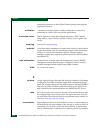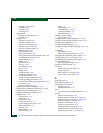
Glossary
g-49
Glossary
and any network that conforms to U.S. Department of Defense stan-
dards for network protocol. TCP provides reliable communication
and control through full-duplex connections (D).
transmission control
protocol/Internet
protocol
TCP/IP. A layered set of protocols (network and transport) that
allows sharing of applications among devices on a high-speed local
area network (LAN) communication environment (D). See also trans-
mission control protocol; Internet protocol.
trap Unsolicited notification of an event originating from a simple net-
work management protocol (SNMP) managed device and directed to
an SNMP network management station.
trap host Simple network management protocol (SNMP) management work-
station that is configured to receive traps.
trap recipient In simple network management protocol (SNMP), a network man-
agement station that receives messages through SNMP for specific
events that occur on the arbitrated loop device.
trunk cable Cable consisting of multiple fiber pairs that do not directly attach to
an active device. This cable usually exists between distribution panels
and can be located within, or external to, a building (D). Contrast with
jumper cable. See also optical cable.
U
UDP See user datagram protocol.
UL See Underwriters Laboratories.
ULP See upper level protocol.
unblocked
connection
In a director or switch, the absence of the blocked attribute for a spe-
cific port. Contrast with blocked connection. See connectivity attribute.
See also allowed connection; dynamic connection; dynamic connectiv-
ity.
unblocked port Devices communicating with an unblocked port can login to the
director or switch and communicate with devices attached to any
other unblocked port (assuming that this is supported by the current
zoning configuration).



